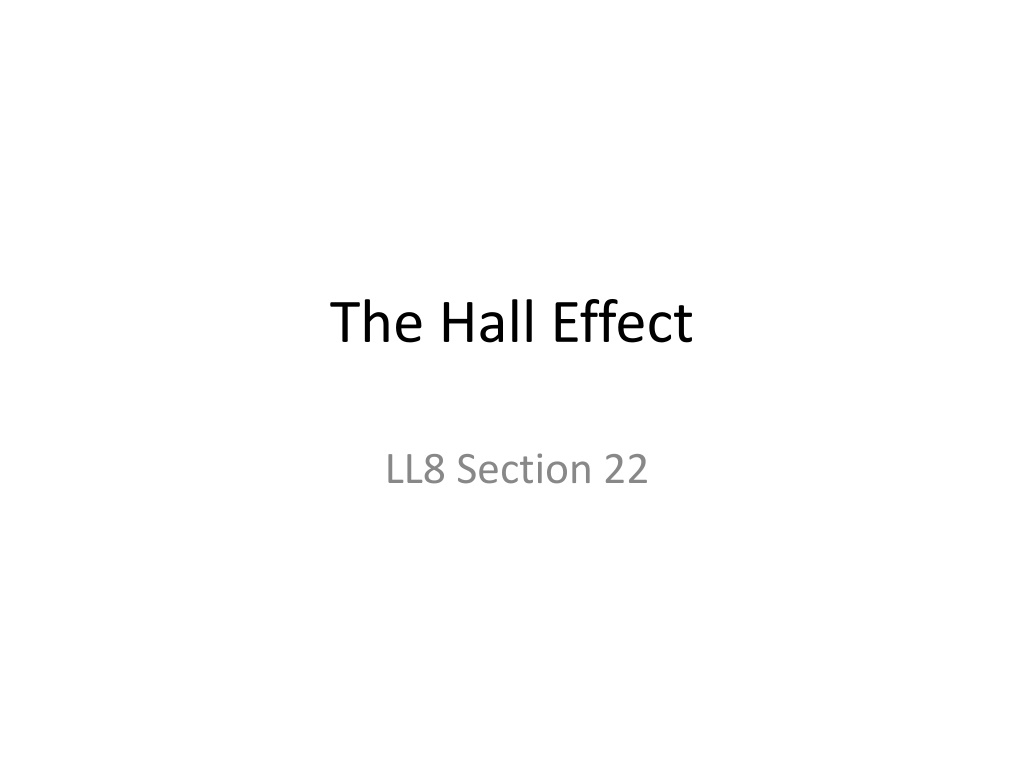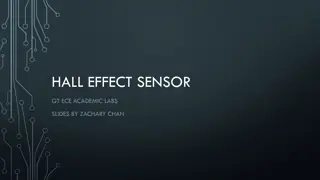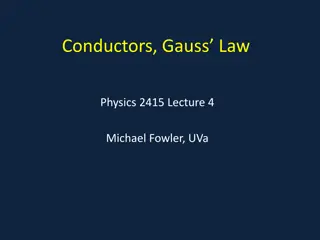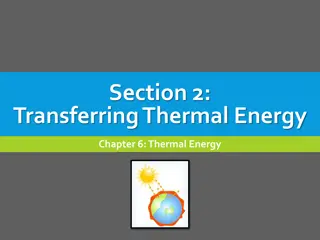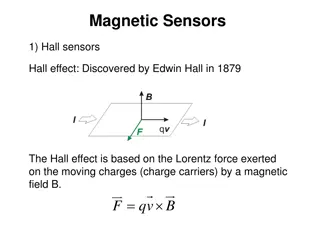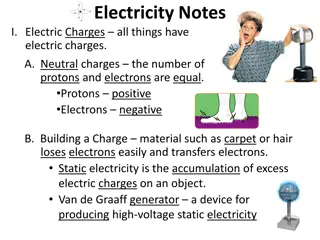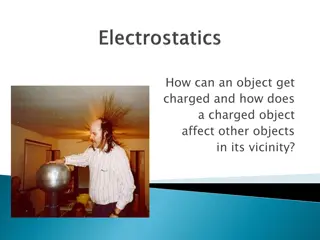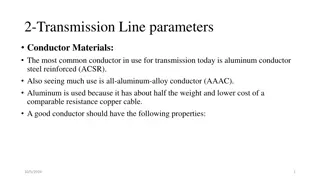Understanding the Hall Effect in Conductors
The Hall Effect in conductors is described in detail, showcasing how a magnetic field affects the conductivity tensor, breaking symmetry and leading to unique properties. The discussion covers the separation of the conductivity tensor, the impact of magnetic fields on conductivity components, and the manifestation of the Hall Effect. Various tensors and vectors are explored to understand the behavior of materials in external magnetic fields.
Download Presentation

Please find below an Image/Link to download the presentation.
The content on the website is provided AS IS for your information and personal use only. It may not be sold, licensed, or shared on other websites without obtaining consent from the author. Download presentation by click this link. If you encounter any issues during the download, it is possible that the publisher has removed the file from their server.
E N D
Presentation Transcript
The Hall Effect LL8 Section 22
1. A magnetic field breaks the symmetry of the conductivity tensor A conductor in an external magnetic field H Onsager s principle doesn t hold anymore Instead v.5 section 120, and v.2: Time- reversal symmetry only if H -H
2. Separate conductivity tensor into symmetric and antisymmetric parts. This is always possible for a rank 2 tensor. But
Components of sik are even functions of H Components of aik are odd functions of H
3. The aik has only 3 components, like a vector. Any antisymmetric aik is dual to an axial vector (no sign change under inversion)
4. Joule heating is determined by the symmetrical part of the conductivity tensor alone. Joule heat Zero, since E (E x a)
5. External H-fields are usually weak. Expand (H) in powers of H. a(H) is odd, so expansion contains only odd powers of H. ai = ik Hk+ a is an axial vector H is an axial vector Must be ordinary polar tensor. Transforms like products of components of vectors that changes sign under inversion. sik(H) is even. Expansion of sik has only even powers Zero-field conductivity tensor Symmetrical in (i,k) and in (l,m)
6. The first order term in the expansion of ik(H), gives the Hall effect. First order effect of H-field is linear in H. ji = sik Ek + (E x a)i Hall effect. Axial vector a is linear in H. ai = ik Hk This term might also have a component perpendicular to E. Hall current is perpendicular to E and proportional to H & E
7. Inverse of ji = ikEk , and the resistivity tensor. Inverse formula Resistivity tensor Antisymmetric part Symmetric part Math arguments repeat The axial vector b is dual to bik, b is linear in H for small H Hall effect Ordinary Ohm s law perpendicular to j and proportional to H and j, but not necessarily perpendicular to H
8. For isotropic conductor (e.g. cubic semiconductors) axial vectors a and b must be parallel to H. (Then Hall current and Hall field are perpendicular to H.) For non-isotropic conductors, All tensors that characterize an isotropic medium must be invariant under all rotations about H
Likewise, symmetric parts of conductivity and resistivity tensors must be invariant under rotations about H
In an isotropic conductor, the Hall field is the only E- field that is perpendicular to both j and H. Hall field
9. The Hall constant R In an isotropic body Hall Constant, can be positive or negative
Next terms in expansion of ikjk must be quadratic in H, linear in j, And be a vector Only possible combinations of H & j are and in an isotropic body
General form of E = E(j) Hall term EH H EH j Quadratic terms EQ1 || j EQ2 || H Zero-field term with isotropic resistivity.
